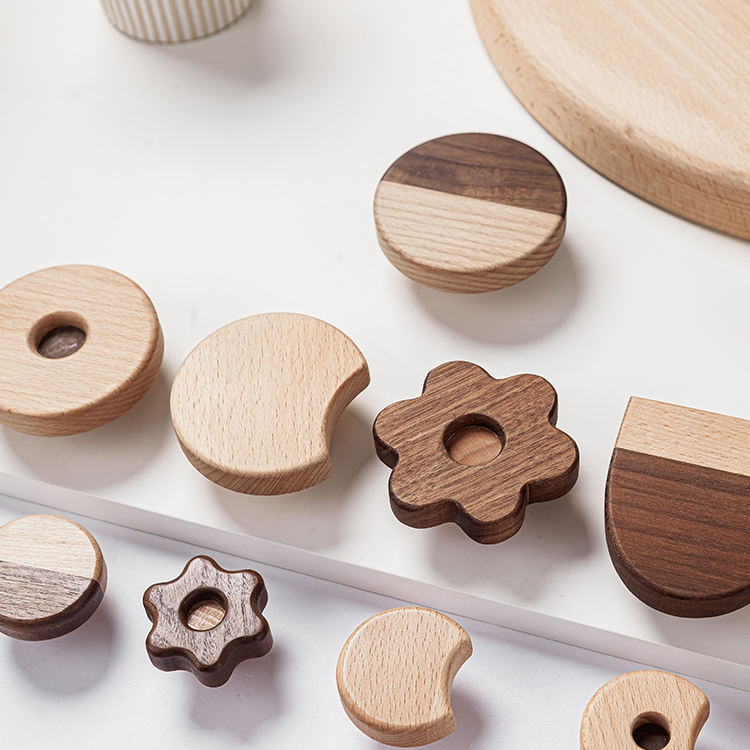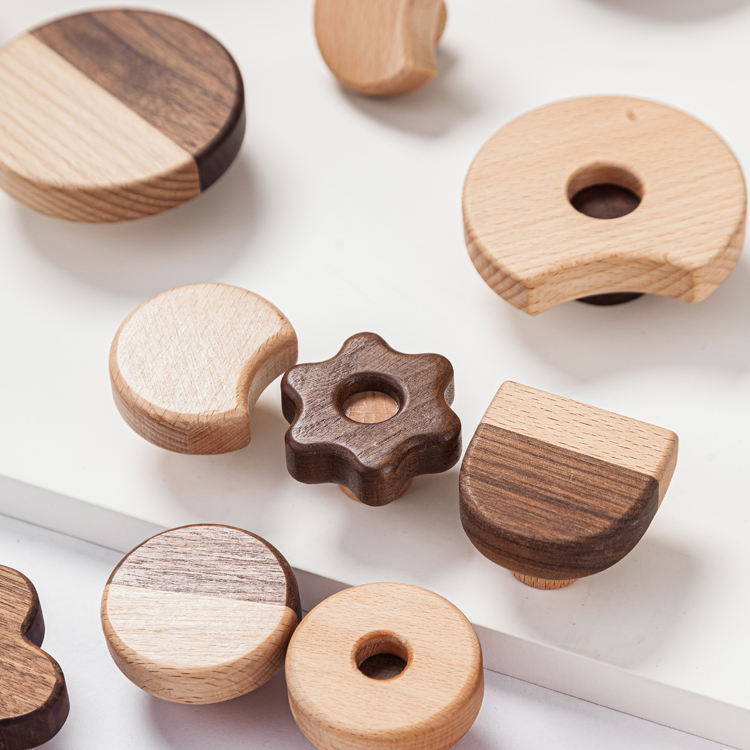Navigating between tradition and modernity in wooden furniture handles involves striking a balance between timeless craftsmanship and contemporary design. By blending elements of both, you can create handles that appeal to a wide range of tastes and fit various interior styles. Here’s how to find harmony between tradition and modernity in your wooden furniture handles:
1. Design Fusion:
Combine traditional design motifs or techniques with modern shapes or materials. For example, you could carve a traditional pattern on a sleek, minimalist handle.
2. Material Innovation:
Experiment with innovative materials that offer the look of wood but with a modern twist. Wood composites, veneers, or resins can be used to create handles that bridge the gap between tradition and modernity.
3. Timeless Shapes:
Opt for classic handle shapes that have stood the test of time, such as knobs or pulls with elegant curves. These shapes can be paired with modern finishes for a contemporary touch.
4. Minimalistic Profiles:
Embrace the clean lines and simplicity of modern design while incorporating the warmth and texture of wood. Minimalistic wooden handles can complement both traditional and modern furniture.
5. Subtle Embellishments:
Add subtle, modern embellishments to traditional handle designs. This could include adding metal accents, geometric patterns, or unique shapes.
6. Mixed Materials:
Combine wood with other materials like metal, glass, or leather to create handles that marry traditional and modern aesthetics. The contrast in textures can be visually appealing.
7. Adaptation of Classics:
Adapt traditional handle designs to suit modern tastes. For example, you could reinterpret a classic drawer pull with a sleeker profile and updated finishes.
8. Play with Finishes:
Experiment with finishes that give wooden handles a modern edge. Matte, metallic, or painted finishes can transform traditional designs into contemporary pieces.
9. Customization:
Offer customization options that allow customers to choose between traditional and modern design elements. This way, you can cater to different preferences.
10. Contextual Integration:
Consider the context in which the furniture will be placed. Handles that bridge tradition and modernity should complement the overall style of the room.
11. Balance Visual Weight:
Maintain a balance in the visual weight of the handles. Even if you’re blending styles, make sure the handles don’t feel out of place on the furniture.
12. Evolving Designs:
Stay open to evolving your designs as trends and tastes change. What might be considered modern today could become a classic in the future.
By navigating the line between tradition and modernity in wooden furniture handles, you can create pieces that honor the craftsmanship of the past while embracing the aesthetics of the present. This balance allows you to cater to a diverse range of customers and interior design preferences.


